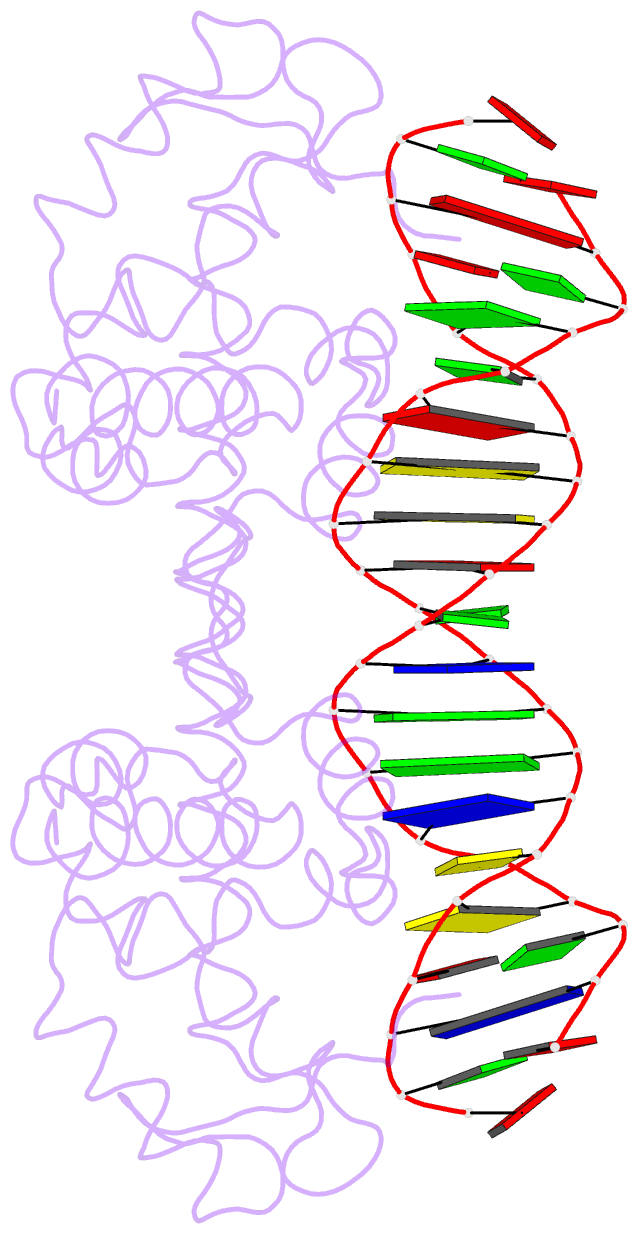Summary information and primary citation
- PDB-id
- 2vy1; SNAP-derived features in text and JSON formats;
DNAproDB
- Class
- transcription
- Method
- X-ray (2.104 Å)
- Summary
- Structure of leafy transcription factor from arabidopsis thaliana in complex with DNA from ap1 promoter
- Reference
- Hames C, Ptchelkine D, Grimm C, Thevenon E, Moyroud E, Gerard F, Martiel JL, Benlloch R, Parcy F, Muller CW (2008): "Structural Basis for Leafy Floral Switch Function and Similarity with Helix-Turn-Helix Proteins." Embo J., 27, 2628. doi: 10.1038/EMBOJ.2008.184.
- Abstract
- The LEAFY (LFY) protein is a key regulator of flower development in angiosperms. Its gradually increased expression governs the sharp floral transition, and LFY subsequently controls the patterning of flower meristems by inducing the expression of floral homeotic genes. Despite a wealth of genetic data, how LFY functions at the molecular level is poorly understood. Here, we report crystal structures for the DNA-binding domain of Arabidopsis thaliana LFY bound to two target promoter elements. LFY adopts a novel seven-helix fold that binds DNA as a cooperative dimer, forming base-specific contacts in both the major and minor grooves. Cooperativity is mediated by two basic residues and plausibly accounts for LFY's effectiveness in triggering sharp developmental transitions. Our structure reveals an unexpected similarity between LFY and helix-turn-helix proteins, including homeodomain proteins known to regulate morphogenesis in higher eukaryotes. The appearance of flowering plants has been linked to the molecular evolution of LFY. Our study provides a unique framework to elucidate the molecular mechanisms underlying floral development and the evolutionary history of flowering plants.





